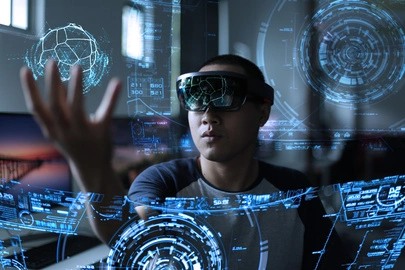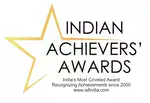Things To Consider When Conducting VR Headset Usability Research
As far as immersive technology is concerned, VR headsets hold the potential to redefine human experiences. In this blog, we delve into the meticulous process of conducting VR headset usability research, an endeavor that demands the integration of qualitative data collection, descriptive qualitative research, and a clear understanding of various types of qualitative research methods. Partnering with a qualitative research agency that is well-versed in global market research nuances can prove invaluable, as you get guidance through the complexities of this evolving field. But before that, here are the key considerations and insights necessary to navigate this exciting technology and unlock unparalleled user-centric perspectives.
Usability Research for VR Headsets
As VR technology continues to advance at a rapid pace, it becomes increasingly vital to dissect the user journey with precision and depth. This endeavor hinges on the meticulous collection of qualitative data, employing descriptive qualitative research techniques to capture users' firsthand interactions, challenges, and perceptions. Such research not only unveils the immediate usability issues but also helps discover the underlying factors shaping user satisfaction. Armed with a profound understanding of global market research trends, businesses can navigate the diverse landscape of VR headset usability research, selecting and adapting appropriate qualitative research methods to comprehensively assess user feedback and preferences. This process, in turn, lays the foundation for refining VR headset designs, functionalities, and content delivery mechanisms to align seamlessly with user needs, aspirations, and expectations.
Identifying Research Objectives
When it comes to VR headset usability research, establishing clear and targeted research objectives is a foundational step. These objectives serve as guiding pillars, steering the research process toward uncovering valuable insights. Identifying these objectives requires a delicate blend of qualitative data research expertise and an understanding of the diverse types of qualitative research methods available. It entails defining the specific aspects of the VR experience to be evaluated, whether it's ease of use, comfort, navigation, or content interaction. With a well-defined set of research objectives, researchers can tailor their methodologies to comprehensively assess user reactions, providing a strategic edge to VR headset usability research that leads to refined, user-centered outcomes.
Participant Selection and Recruitment
Selecting and recruiting participants for usability research is a critical phase that demands precision and foresight. Identifying the right participants, encompassing a diverse cross-section of potential users, ensures that the insights gained are representative and reflective of real-world scenarios. Effective participant selection and recruitment lay the groundwork for a comprehensive exploration of user experiences, enabling researchers to capture diverse perspectives and feedback that informs subsequent design improvements and optimizations for VR headset usability.
Choosing the Right VR Headset
This step involves meticulously considering factors such as the intended user base, technological specifications, comfort, content compatibility, and interaction capabilities. By choosing the appropriate VR headset, researchers set the stage for a comprehensive assessment of usability, ensuring that user experiences are evaluated within the context of the device's capabilities and limitations. This paves the way for targeted improvements that resonate with the end-user's expectations and needs.
Iterative Design and Testing
Through iterative cycles, designers use insights gained from usability testing scenarios to make incremental improvements to the VR headset's interface, interactions, and overall usability. Each design iteration builds upon the previous, integrating user feedback to address pain points and enhance functionalities. This cyclical approach not only enhances the VR headset's performance but also aligns it more closely with users' expectations and needs, fostering a dynamic cycle of improvement that leads to superior, user-centered design outcomes.
Final Word
By meticulously crafting usability testing scenarios, incorporating iterative design improvements, and considering user feedback, businesses can position themselves at the forefront of immersive technology innovation. This synergy between qualitative data research and qualitative research techniques paves the way for VR headsets that resonate seamlessly with user preferences and cultural diversity, ultimately setting the stage for exceptional user experiences and a competitive edge in the dynamic market. Collaborating with a specialized qualitative research agency proficient in global market research intricacies adds an invaluable dimension to this journey. This is where Unimrkt Research comes into the picture. We have worked in more than 22 languages and are ISO20252 and ISO 27001 certified. To learn how we can help you, contact us at +91-124-424-5210. You can also email sales@unimrkt.com, or fill out our contact form, and we will promptly respond to your inquiry.
Quick Enquiry
Customer Service, We Make it Better
Recent Posts
- How to Clarify and Align Your Research Goals for Maximum Impact
- Mining Valuable Data: The Driving Force for an Effective Growth Marketing Strategy
- Speaking the Customers Language: 7 Tips for Meaningful Qualitative Research
- Creating Value for Investors: The Benefits of Primary Market Research
- Utilizing Closed-Ended Questions For Quantitative Market Research
- Capturing the Changing Interests of Millennials Through Qualitative Research
- Refining Unit Economics with Robust Quantitative Market Research
- A Concise Guide to Quantitative Market Research
- 3 B2B Market Research Trends That Could Shape 2024
- Eyes on 2024: Changes That Might Disrupt the Healthcare Industry This Year
- Cracking the Language to Make Survey Questions Inclusive in 2024
- Attracting Investors: How Market Research Can Solidify Your Case
- Solid Foundations: Ways to Enhance Trustworthiness in Qualitative Research
- What Makes CATI Research So Effective?
- Moderator Qualities That Improve Qualitative Market Research
- 5 Consumer Market Trends That Will Define 2024
- What are the strengths of quantitative research?
- How to Make Your Partnership with Primary Market Research Firms Fruitful
- A Quick Guide to Harnessing the Strengths of Quantitative Research
- Advice from Your Research Partner: Don't Compromise Quality on Online Surveys













